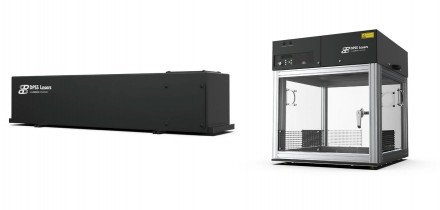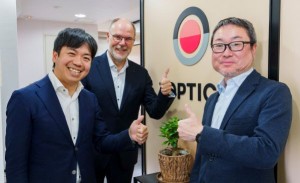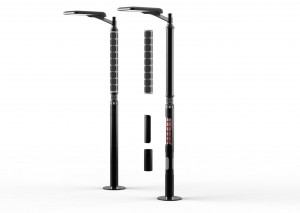
VitreaLab is an Austrian company using quantum technology for the development of integrated optics solutions and next generation display products.In this article, Jose Pozo, EPIC´s CTO, talks to Jonas Zeuner, CEO of VitreaLab on how the company got its start, its unique technology approach and where the company is headed.
VitreaLab is a photonics start-up, shaped by top-level engineers who work in a fully equipped laboratory facility in Vienna. Inspired by quantum technology, they provide integrated optics solutions, ranging from simple lighting to visionary display products. VitreaLab creates innovative products by writing waveguides (light micro-channels) in glass, based on a unique laser-writing technology. VitreaLab´s innovative laser-lit chip will strongly improve standard LCDs and will unlock world-first full holographic display. By replacing the standard backlight unit of an LCD with VitreaLab’s technology, each sub-pixel is supplied by a dedicated light source with correct color, polarization and angular distribution. This significantly enhances the LCD´s performance in terms of energy efficiency, brightness, contrast ratio, and color rendering.
Research background
In 2014, Jonas graduated from Ruprecht-Karls University in Heidelberg with an MSc in Physics, where we did two industrial internships, which gave him some pointers for a future career. The first was with Robert Bosch, where he worked on engine control functionalities, and the other was a research project on coal with RWE Power, a major German power company.
But things worked out differently, because having developed a passion for photonics, at the end of his Masters, he opted for a PhD in Quantum Optics at the Vienna Center for Quantum Science and Technology. Over the next 4 years, Jonas worked with research groups from Germany, Milan and at the Massachusetts Institute of Technology (MIT) in Boston (US), and accumulated valuable knowledge and expertise in integrated photonic networks, homomorphic encryption, quantum computing and laser writing waveguides in glass.
Toward the end of his PhD, he began to think about how the technology he and his colleagues had developed could be commercialised. The broad idea he came up with was to develop displays and sensors: specifically, because everything was coherent, light emitted through the side of a glass substrate could be guided to a viewer to produce transparent, volumetric and even holographic displays. Compared with current technology, such laser-based displays would have better colour, contrast, resolution and energy efficiency and, in theory, applications would be limitless.
VitreaLab
After discussing the idea with his good friend and research colleague, Chiara Greganti, in 2018, they agreed to create a start-up, VitreaLab, as joint managing directors. The aim was to use the laser-powered photonic integrated circuits they´d developed to enable holographic displays and revolutionize the display market.
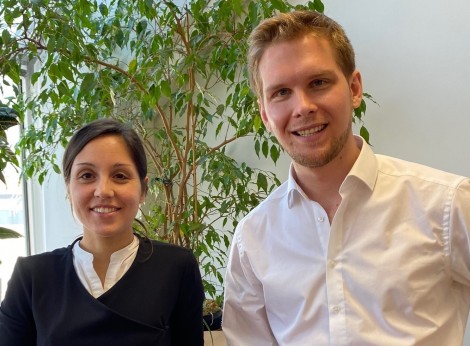
Chiara Greganti and Jonas Zeuner
The technology
VitreaLab´s technology is based on the ultra-fine control of light within a thin piece of glass. Basically, light from an RGB laser is emitted through the side of a glass chip containing waveguides manufactured by femtosecond-laser micromachining (or so-called direct laser writing) of glass. Combinations of various waveguide structures are able to split, combine, steer and spread the light inside to produce millions of beams that can be used to create a variety of novel displays.
This approach has several advantages over competing technologies, such as wedges or slab waveguides. First, it enables true 3D and other geometries inconceivable with standard fabrication systems. Second, waveguides can be produced in any type of transparent materials and crystals. Third, it allows the low-loss guiding of high-power laser light from ultraviolet to infrared. Fourth, it allows the manufacture of different kinds of microstructures, without modifying the fabrication equipment - a feature crucial for rapid prototyping and low-cost mass-manufacturing.
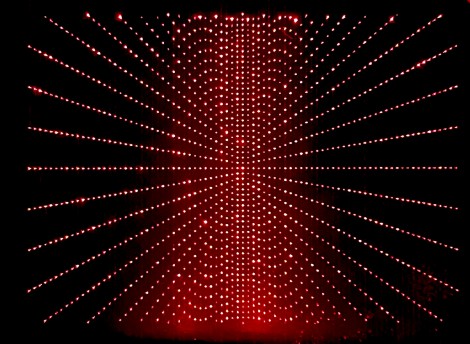
With these features, VitreaLab´s innovative laser-lit chips would be able to unlock the world´s first full holographic display and enable standard LCD technology to achieve up to five times higher energy efficiency, higher contrast ratios and colour rendering. This would apply to all types of displays particular mobile devices because as the screen is the largest drain on the battery, VitreaLab’s solution would enable almost a doubling of battery lifetime.
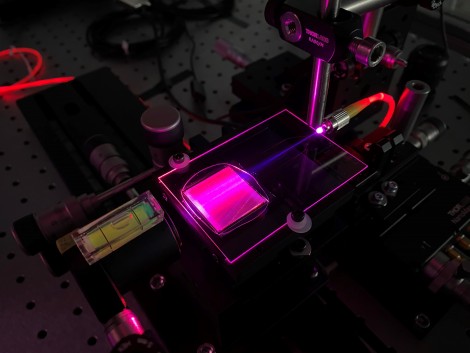
Company development
The first step was to patent the technology for use in consumer applications, which they achieved with the help of the university´s patent office. The second, was to secure seed capital from the Austrian government´s funding scheme for high-tech start-ups, a task that required creating a business plan and demonstrating they had potential customers.
Accordingly, having established a small core team of photonics engineers from people they already knew from their research collaborations, the next priority was to convince industry that their technology had revolutionary potential. As Jonas recalls, he was surprised how easy it was: “We just called companies like Sharp and Microsoft who were happy to set up meetings to discuss what we had in mind”. What was equally surprising was that despite having nothing more than the work they had done in the quantum lab, they successfully managed to get their ideas validated and started to sign non-disclosure agreements.
In parallel, they needed to sell their technology to investors. Luckily, this also proved relatively straightforward thanks to two deep-tech venture capitalists in Vienna, who saw the potential of both in VitreaLab´s unique technology and the ability of VitreaLab to drive the technology forward.
Over the past three years, VitreaLab has grown to a workforce of 8 and has raised investment for a state-of-the-art research laboratory to build prototypes and develop the necessary mass-production techniques. In February 2021, VitreaLab was listed on the DACH "spin-offs to watch" list of Forbes Magazine.
The future
One of VitreaLab´s main challenges is to ensure their designs are compatible with low-cost mass manufacturing. For this reason, they have to be stringent in the design of their chips. In this connection, a positive factor is the downward trend in the cost of femtosecond lasers which have fallen considerably in the last 10 years and are likely to decrease even more in the near future. This will enable the company to reduce the cost of laser writing particularly for smartphone displays.
A second and related issue is the possible need to bring someone in to drive business development. Although their two venture capitalists are very hands-on and provide regular coaching, they have been thinking about eventually recruiting someone from the display industry with experience of start-ups to strengthen the business arm of the company. Already now Mark Verrall, former VP at Merck and head of Global Research & Development for Display Materials is advising VitreaLab.
Regarding application fields, Jonas sees opportunities in the medical sector particularly for laser array Illumination for microfluidic devices. Telecommunications in relation to optical fiber interfaces and switches is another probable growth area as is sensing that requires ultra-high resolution laser point grids. They´ve also been thinking about going into double Frequency-Modulated Continuous Wave LiDAR.
In terms of technology, Jonas´s preferred future is to successfully roll out their more standard LCD backlight products and to have the financial freedom to build a new lab and hire people to focus on the more futuristic systems like holographic displays with perfect 3D images without the need for goggles or headsets. Mastering the technology in this area will provide VitreaLab with extremely interesting tools for general light shaping and the ability to create all kinds of light distributions and novel ideas that can be pushed into many different areas.
Even in the case that they get bought out, Jonas is adamant that VitreaLab will be able to continue to drive these and other ideas forward; firstly, because they lack the experience to go into mass manufacturing and secondly, and most importantly, because R & D is at their core and what they do best.
If you started again, what would you do differently?
In an ideal world we could have stayed longer at the university to validate more parts of the technology before founding the company. But this was difficult in our case because multiple institutions in two different countries were involved and no funding sources fitted to that particular scenario/timeline.
What is your advice for the next generation of entrepreneurs?
“First, only do a PhD if you´re passionate about the technology. If you do it just for a fancy title, you may have a comfortable life, but a qualification that in most walks of life is completely useless. While It´s true that doing a PhD gives you experience in how to meet deadlines and how to collaborate with people, in my experience, it´s better to get this insight working in industry”.
“Second, if you create a deep-tech start-up to make money, you´ll be miserable because all you´re going to have is a high stress, low paid job and a 95% probability that the company will fail”.
“Third, it´s essential to start a company with at least one co-founder and build a core team of people you trust completely. Starting a business alone is a nightmare and if I hadn´t had Chiara with me, I wouldn´t have started the company. It´s extremely stressful if you have to double check what someone´s doing or if you´re not sure they´re 100% committed or will do a task properly. For this reason, I´d advise against inviting a university professor to join the founding team because they usually have too many other interests to be fully committed”.
Written by Jose Pozo, Chief Technology Officer at EPIC (European Photonics Industry Consortium).













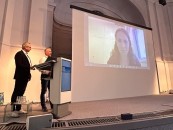

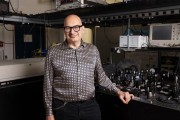


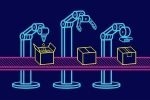
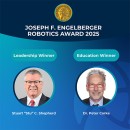
















 Back to Features
Back to Features










